- Area: Siem Reap Province > Svay Leu District > Ta Siem Commune > Rahal Village
- | Type: Ancient Remains & Temples
Group of three ruinous temples constructed from sandstone, laterite, brick and featuring wall, ‘library’ building, and basin in the east. At the time of visiting (late 2021) the site was heavily overgrown and for some of the description, I’ll rely on that by Boulbert & Dagens who surveyed the site in the late 60s and published in Les sites archéologiques de la région du Bhnaṃ Gūlen (Phnom Kulen).
In that article, they describe a moat that is not seen today perhaps consumed by farming practices. Behind the mass of shrub that conceals the whole temple site, you can see parts of the laterite wall in excellent condition, and coming from the east where the temple site opens there are the ruins of the entrance gopura. Entering through you can see the tall tower, a curious construction of part sandstone rising up with a brick superstructure, all of which has become engulfed by a tree and its roots. It’s most certainly a great wonder.
Adding to the wonder is the state of the sandstone and the extent of its decay. Then, past all the thorny scrub and there is the impressively preserved lintel. In the report mentioned earlier this tower is the central tower that is flanked by the remains of two others with little left of the northernmost tower and only some base elements of the south tower, plus, there was a “library” building.
An inscribed stele was located at the site and registered under K. 1047 that appears to have never been recorded.




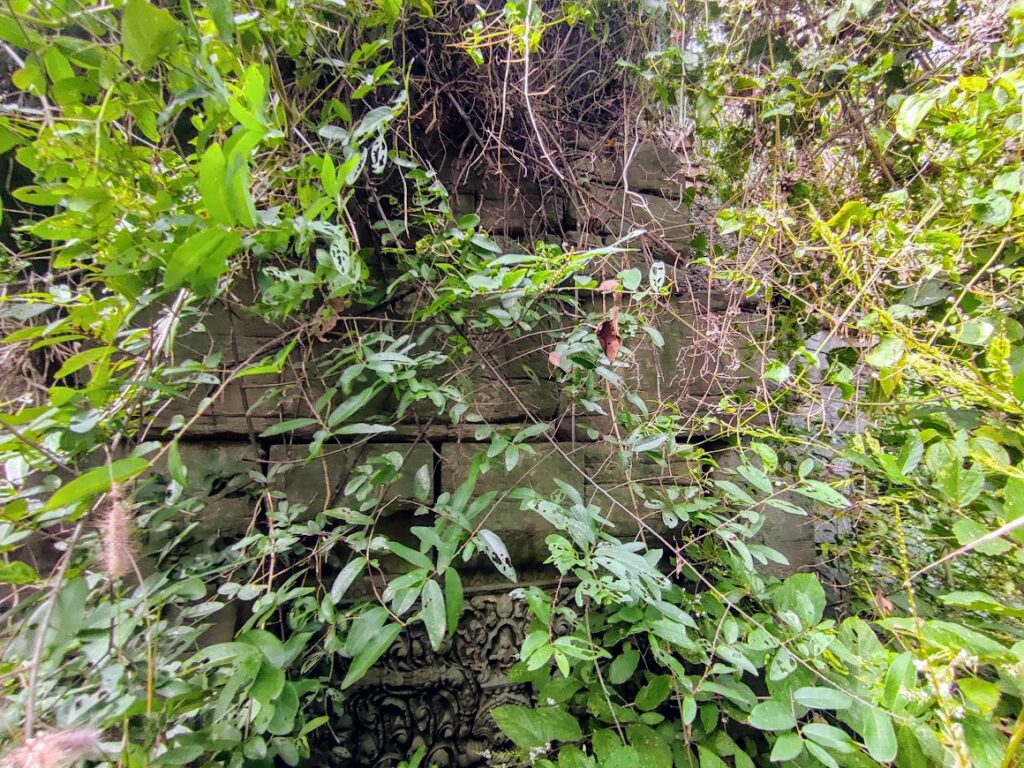
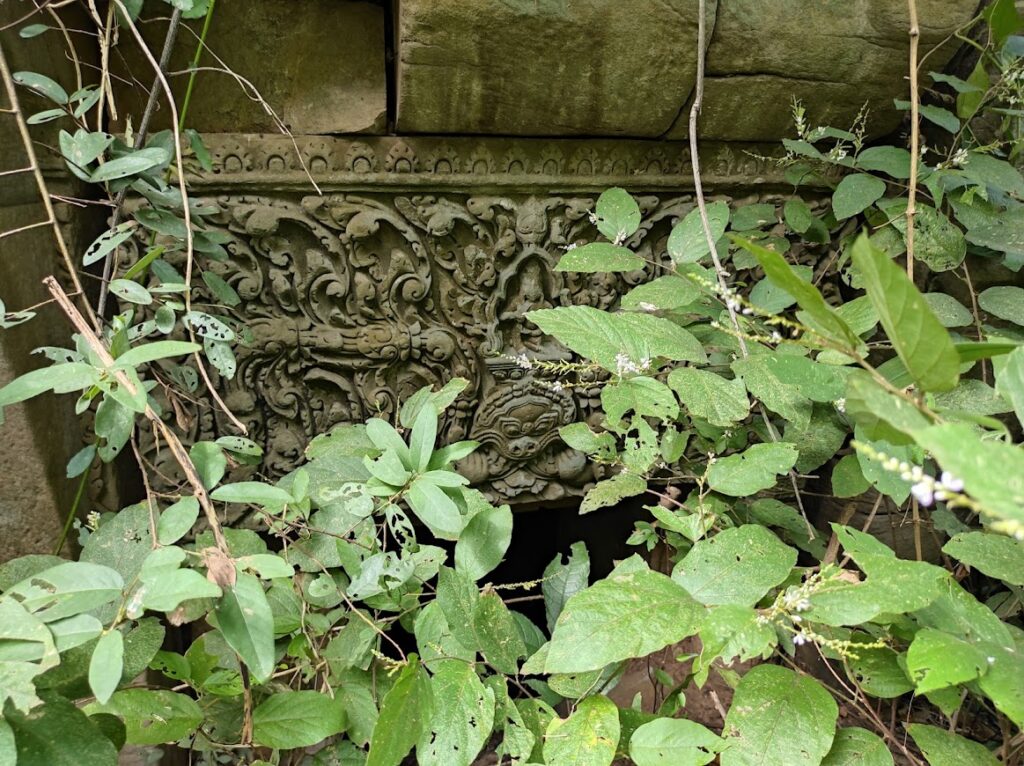
As mentioned, this visit was in late 2021, just after the end of the rainy season so the overgrowth will likely die back in summer. Curiously and it always amazes me how such impossibly heavy items end up so far from their origin, below is a crown piece that would have sat atop the tower now residing outside the west corner of the enclosure wall. Also nearby, a native bee nest.

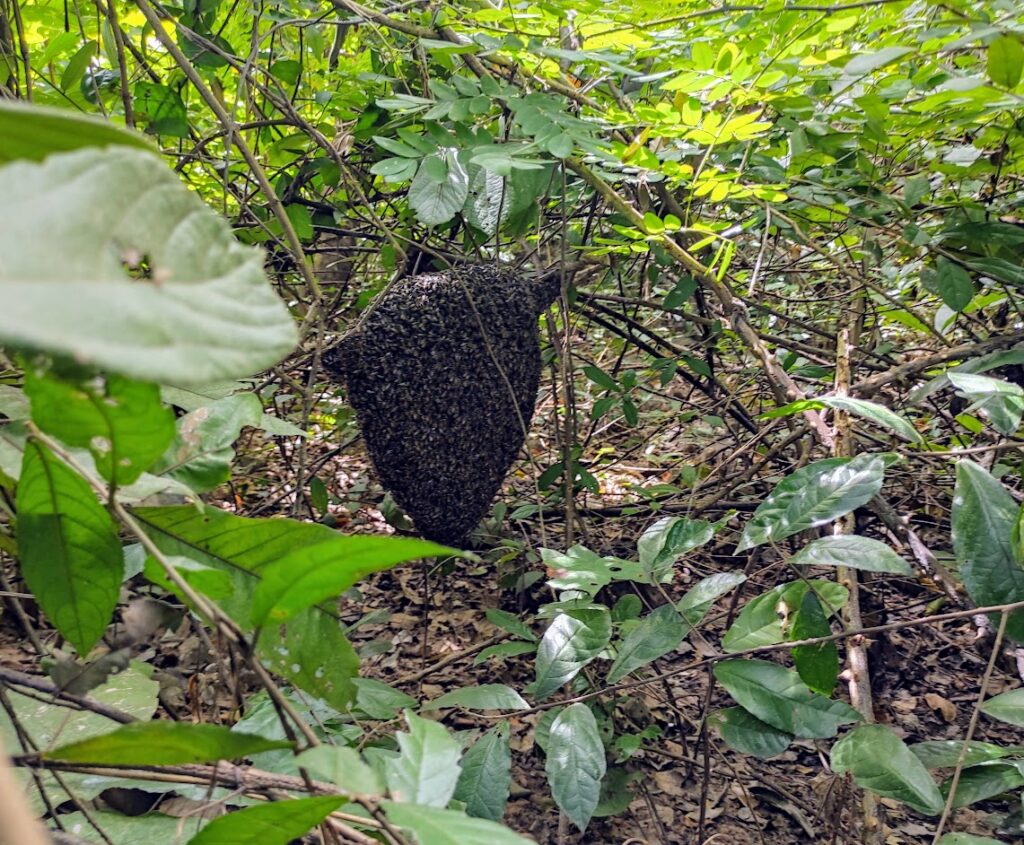
Site report, Bruno and Dagens 1973
This temple located in the middle of a dense forest to the east of “Sdin Jikrén” is surrounded by a wide moat surrounding a ruined enclosure; to the east, a heap of rubble where many sandstone debris can be seen marks the location of the entrance pavilion. There were three sanctuary towers; the central tower partly taken in a huge ficus (photo 61) has a sandstone body and brick superstructures; the lintel of its eastern entrance is of the classic type (photo 62). The South tower is entirely in brick except of course its gatehouse; it is destroyed at the level of the upper level of its lintel which is similar to that of the central tower (photo 63). Finally, the only trace of the North tower is a mound topped with a termite mound.
But the most important find made at Ta Van’ is a historiated and inset stele (photos 64 to 66); unfortunately this discovery was made at the end of May 1970 and a second trip planned a few days later to stamp the inscriptions that this stele bears on three of the six faces, could not take place for the reasons that we know; and moreover the characters engraved on the main face are too thin to appear on a photograph. This inscription received the n° K. 1047 in the inventory of the inscriptions of Cambodia.
Les Sites Archeologiques de la region Bhnam Gulen, Boulbert and Dagens 1973

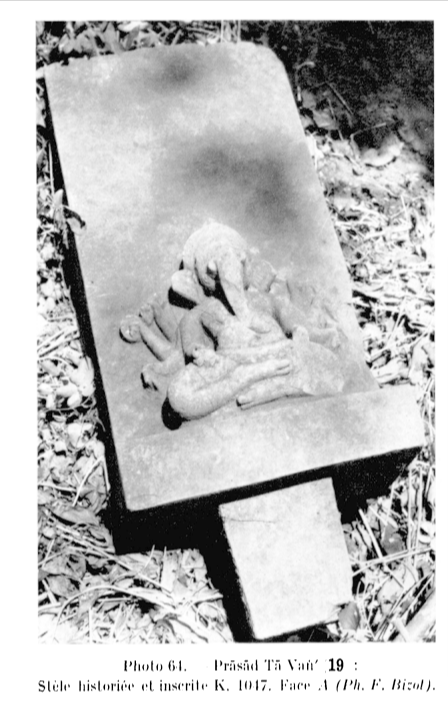
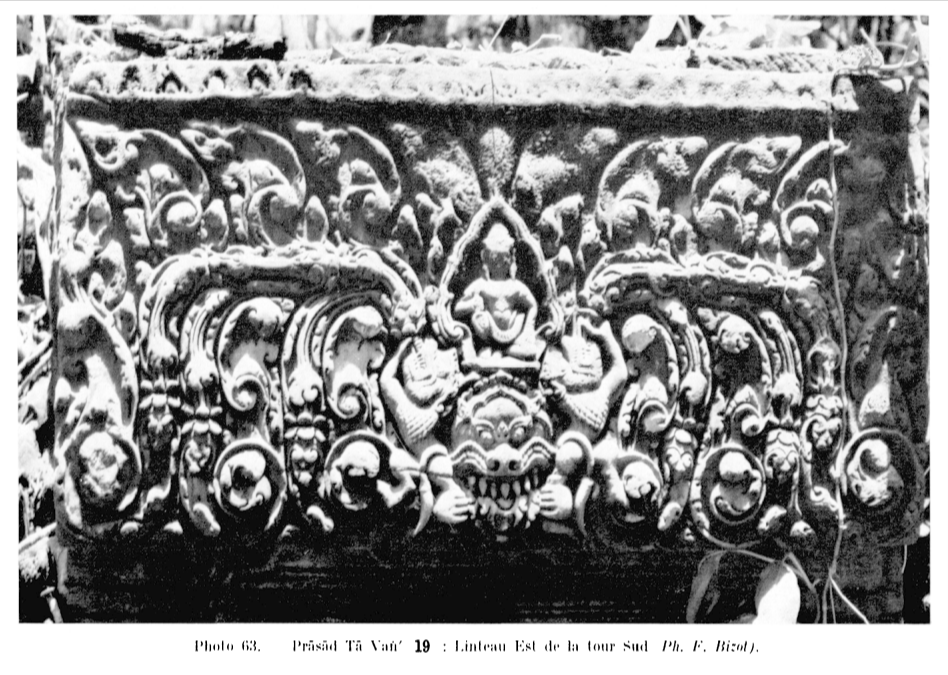
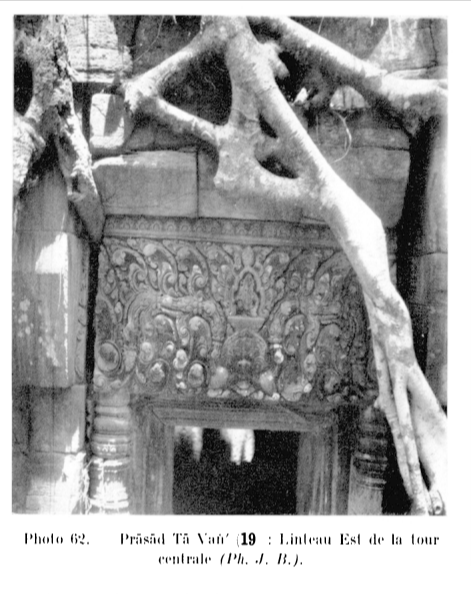
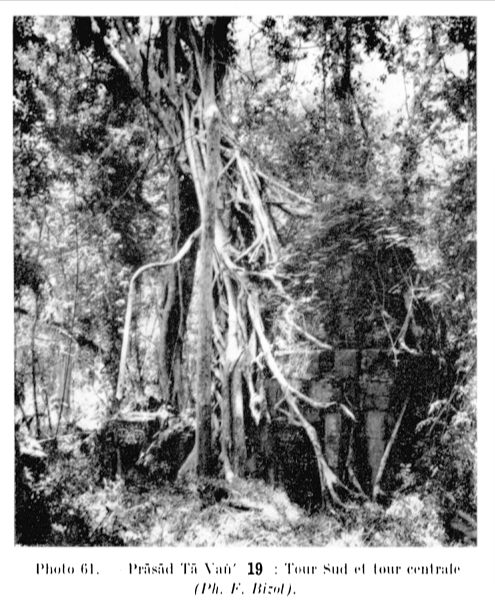
Inscription
- K. 1047 – 29 + 11 lines of Khmer text – unpublished
Map
Site Info
- Site Name: Ta Vong (Pr.) Khmer Name: បា្រសាទតាវង់
- Reference ID: HA12944 | Posted: January 18, 2021 | Last Update: December 12th, 2021
- Tags/Group: b, Kulen, pr, Temples
- Location: Siem Reap Province > Svay Leu District > Ta Siem Commune > Rahal Village
- MoCFA ID: 1919
- IK Number: 226.19
- Inscription Number/s: K. 1047

